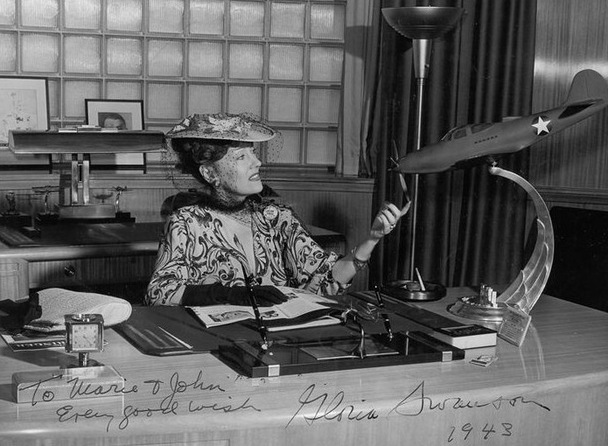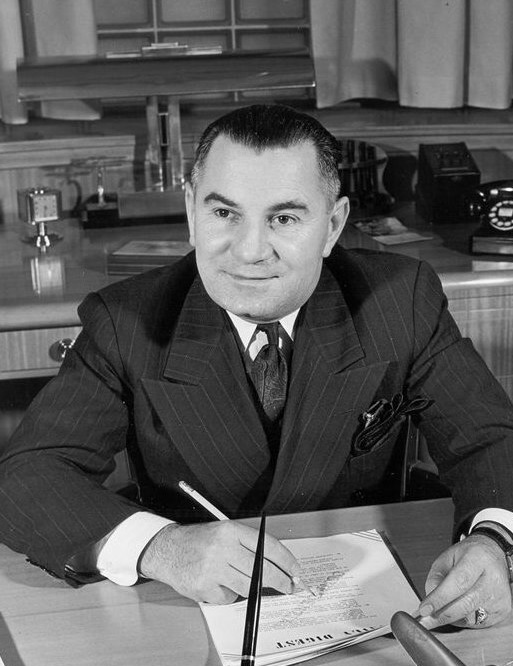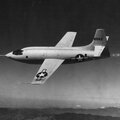
Demolition equipment brings down a portion of the former Bell plant in Wheatfield, March 2025. The portion that once contained Larry Bell’s office has already been destroyed.
Western New York Heritage Photograph
This past march, passers by noted the presence of large, ominous machinery in front of a section of the Bell Aircraft/Aerospace facility on Niagara Falls Blvd., adjacent to the Niagara Falls International Airport in the Town of Wheatfield. Preservationist fears were soon realized, as the equipment soon began to demolish a section of the WWII-era Bell plant.
Reports suggest that only a relatively small portion of the facility is to be taken down – the large structure that housed the aircraft assembly lines is supposed to remain. Even so, the section, which will be nothing but a memory by the time this issue is released, was once the nerve center of Bell Aircraft, containing a control tower-like cupola – and Larry Bell’s office.
Of course, rationalizations and justifications have poured out from various sources – some more disappointing than others – once news of the impending demolition became known. “Oh, the space is needed for other projects,” some say. “That building has been in bad shape for years and was condemned.” No doubt the latter is true – but thanks to years of neglect and indifference.
I felt I needed to go see the work being done for myself. What I saw actually made me physically ill. To think of the pioneering work that was conceived in that building – in that office – even if executed in the still extant structures and grounds to the rear. Now, despite my passion for things historical – and aviation history, in particular – I will be toward the front of the voices that acknowledge – with regret – that we can’t save everything. But this is not the first regional example of the practice – which borders on criminal – of letting landmarks fall into disrepair through neglect and indifference, then using that status to justify eradicating another tangible connection to our significant past from the face of the earth.
Those who have followed my work here over the years will recollect that I am not one to use my post for editorializing purposes. That being said, readers who sense a level of bitterness and disgust in the text on this page are not imagining things.
As a tribute to what this facility once was – and as testimony to its inglorious end – we have assembled these few images. There will be more on the history of this storied company – and this storied facility – in our pages in the future. To those who have family ties to and/or personal recollections of the history that was made here – I extend my sincere condolences, and ask that you not hesitate to reach out with an email or letter to share your personal pieces of this history with us.
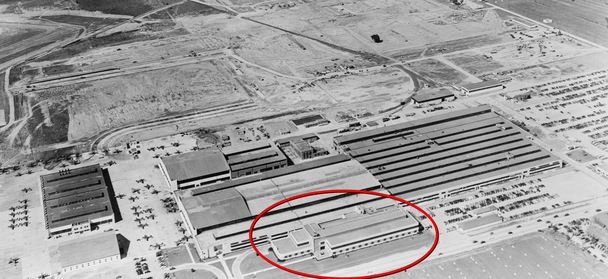
An aerial view of the Bell facility, ca. 1944. The aprons are filled with P-39 Airacobras and P-63 King Cobras. The section demolished in 2025 appears in the red oval at bottom center.
Library of Congress
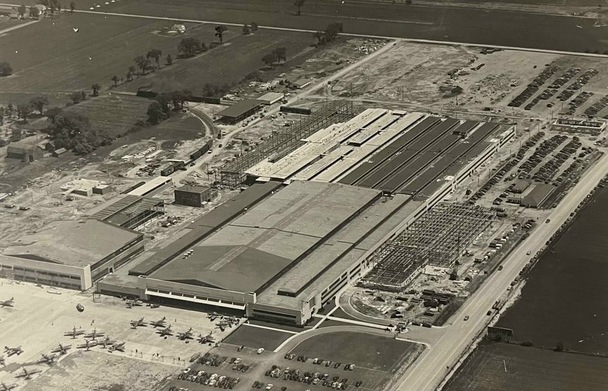
This ca. 1942 aerial view shows the demolished section still under construction at right center.
Library of Congress
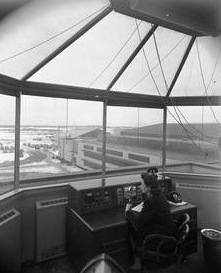
A rare view from inside the “control tower” perched on the roof of the now-demolished section.
Private Collection
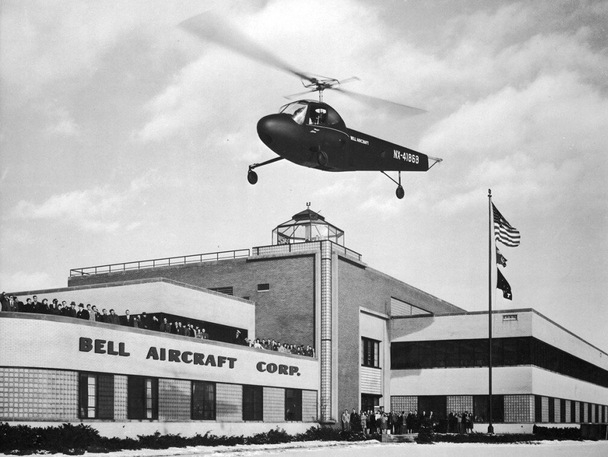
A crowd assembled in front of the now-demolished section, and on the open-air platform outside Larry Bell’s office (left center), watch a demonstration of the Bell Model 30 helicopter (Ship Two), ca. 1945. Note the control tower-like cupola on the roof.
Private Collection

Commemorative desk lamp, celebrating Larry Bell’s 30 years in aviation, features an early flyer and a P-39 Airacobra. The lamp sat on the credenza in Bell’s office.
Private Collection
